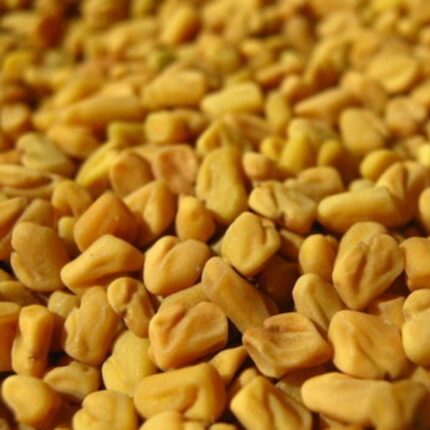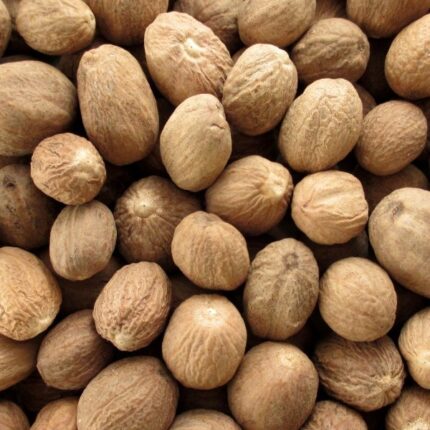Star anise is a spice made from the fruit of the Chinese evergreen tree Illicium verum. It’s aptly named for the star-shaped pods from which the spice seeds are harvested and has a flavor that is reminiscent of licorice. Because of similarities in their flavor and names, star anise is often confused with anise, though the two spices are unrelated. Star anise is famed not only for its distinct flavor and culinary applications but also for its medicinal benefits.
Star anise
Star anise is a spice made from the fruit of the Chinese evergreen tree Illicium verum. It’s aptly named for the star-shaped pods from which the spice seeds are harvested and has a flavor that is reminiscent of licorice. Because of similarities in their flavor and names, star anise is often confused with anise, though the two spices are unrelated. Star anise is famed not only for its distinct flavor and culinary applications but also for its medicinal benefits.
Category: Spices
Related products
Basil seeds
Basil seeds aren’t just for growing basil plants — you can also eat them.They look similar to sesame seeds but are black. The type that you eat typically comes from sweet basil, Ocimum basilicum, which is the plant commonly used to season foods. For this reason, the seeds are typically referred to as sweet basil seeds. They also go by many other names, including sabja and tukmaria seeds.helping with weight management, and helping prevent diseases such as cardiovascular disease and certain cancers. Although promising, current research is scarce and in its early stages.
Fenugreek seeds
Fenugreek (Trigonella foenum-graecum) is an herb similar to clover. People use its fresh and dried seeds, leaves, twigs, and roots as a spice, flavoring agent, and supplement. The seeds taste similar to maple syrup and are used in foods and medicine. Fenugreek is native to the Mediterranean, Europe, and Asia. Fenugreek seems to slow sugar absorption in the stomach and stimulate insulin. Both of these effects lower blood sugar in people with diabetes.
Turmeric
Turmeric is one of the many Indian spices that have been a part of various traditional cuisines over centuries. Ayurveda has regarded Haldi or Turmeric as one of the most beneficial roots in nature.Turmeric is originally a ginger-like rhizome and is widely used in Indian households not just to give that beautiful, golden colour to food but also to increase the nutrient and medicinal value of what we eat. It is rich in antioxidants and curcumin that increase the body’s immunity and kick out the disease, along with various other advantages like improving brain and heart function and possible treatment for cancer-causing cells.
Nutmeg
Nutmeg (Myristica fragrans Houtt.) is a spice seed that belongs to the family Myristicaceae. Nutmeg is the shelled, dried seed of the plant Myristica fragrans, and mace is the dried net-like covering of the shell of the seed. Nutmeg and its close relative, mace, have been used extensively in folk medicine for a wide range of ailments, including digestive disorders, rheumatism, cholera, and flatulence.
Cumin Seed
Cumin is a spice made from the seeds of the Cuminum cyminum plant. Cumin lends its distinctive flavor to chili, tamales and various Indian curries. Its flavor has been described as earthy, nutty, spicy and warm. What’s more, cumin has long been used in traditional medicine. some of the health benefits cumin is traditionally known for, including promoting digestion, reducing food-borne infections, promoting weight loss and improving blood sugar control and cholesterol.
Black pepper
Black pepper is one of the most commonly used spices worldwide.It’s made by grinding peppercorns, which are dried berries from the vine Piper nigrum. It has a sharp and mildly spicy flavor that goes well with many dishes. But black pepper is more than just a kitchen staple. It has been deemed the “king of spices”and used in ancient Ayurvedic medicine for thousands of years
Asafoetida
Asafoetida (Ferula asafoetida) is the dried sap or gum resin obtained from the roots of Ferula plants. It’s commonly dried, ground into a coarse, yellow powder, and used for either culinary or medicinal purposes. Asafoetida is commonly used in Indian cuisine, where it’s referred to as "HING". In Ayurvedic medicine, hing is used to aid digestion and gas, as well as treat bronchitis and kidney stones.











Reviews
There are no reviews yet.